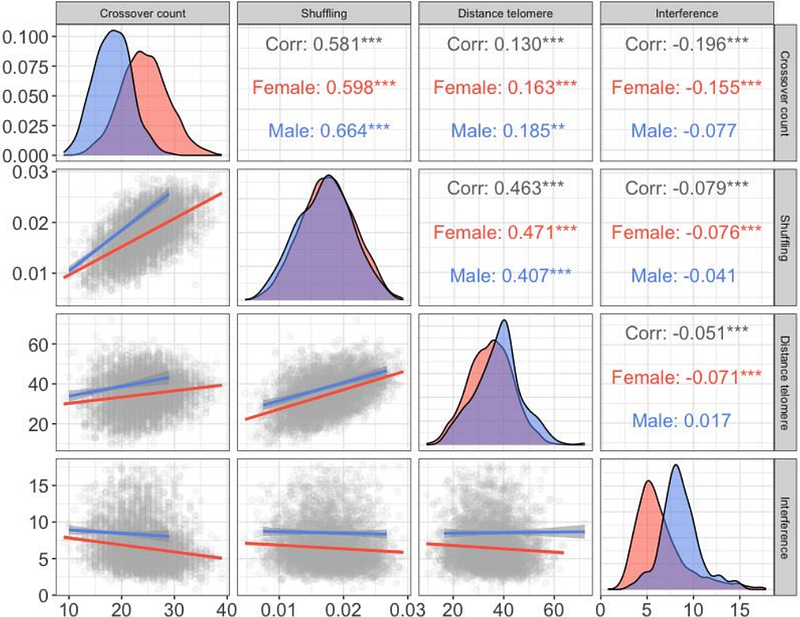Individual variation in meiotic crossover positioning, rate and interference are driven by distinct genetic processes in domestic pigs.

Individual variation in meiotic crossover positioning, rate and interference are driven by distinct genetic processes in domestic pigs.
Brekke, C.; Gjuvsland, A. B.; Berg, P.; Johnston, S. E.
AbstractMeiotic crossovers are essential for proper chromosome segregation, and provide an important mechanism for adaptation through linking beneficial alleles and purging deleterious mutations. However, crossovers can also break apart beneficial alleles and are themselves a source of new mutations within the genome. The rate and distribution of crossovers shows huge variation both within and between chromosomes, individuals and species, yet the molecular and evolutionary causes and consequences of this variation remain poorly understood. A key step in understanding this variation is to understand the genetic architecture of how many crossovers occur, where they occur, and how they interfere, as this allows us to identify the degree to which these factors are governed by common or distinct genetic processes. Here, we investigate individual variation in crossover count, crossover interference ({nu}), and crossover positioning measured as both intra-chromosomal allelic shuffling and distance to telomere (Mb), in a large genotyped breeding population of domestic pigs. Using measures from 82,474 gametes from 4,704 mothers and 271 fathers, we show that crossover traits are heritable within each sex (h2 = 0.03 - 0.11), with the exception of male crossover interference. Crossover count and interference have a strongly shared genetic architecture in females, mostly driven by variants at RNF212. Female crossover positioning is mediated by variants at MEI4, PRDM9, and SYCP2. We also identify tentative associations at genomic regions corresponding to CTCF and REC114/REC8/CCNB1IP1 (crossover count), and ZCWPW1 and ZCWPW2 (crossover positioning). Our results show that crossover count and crossover positioning in female pigs have the capacity to evolve somewhat independently in our dataset.


